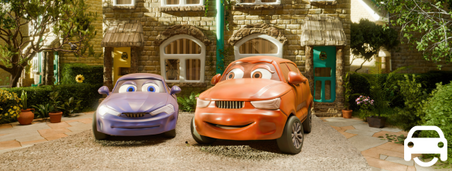Driving Through Flood Water: A Guide

Driving can present us with all sorts of challenges, and in the wetter months, flooding can be the toughest challenge of them all.
When we think of flooding, burst river or sea banks usually comes to mind, but surface water flooding can cause just as many issues in a localised area.
Many drivers will make the mistake of driving straight into flood water and losing control, which can result in disaster. The best way to prevent this is to be prepared, so we’re here to give you some tips on how to act when the water levels start to rise.
Driving in Heavy Rain
If there’s heavy rain and flood warnings, consider whether your journey is essential before you set off, and if it is, try to alter your route for areas that are prone to flooding.
When driving in heavy rain it’s important that you have your headlights on at any time when the visibility is reduced to less than 100m, and use dipped headlights if you can as this will prevent dazzling any oncoming drivers.
Your stopping distance is severely increased when the roads are wet, so you must leave twice the distance between you and the car in front.
If you breakdown in heavy rain, it’s essential not to leave the bonnet open when awaiting a repair, as if the electrics become soaked you can run the risk of further damage on your vehicle.
Need breakdown cover? Get a MotorEasy quote today!
Flood Alert? Move Your Car
It’s important to keep your eye on the weather forecast and for any flood weather warnings. If there are flood warnings for either the place you are travelling to or from, then it’s time to assess whether you need to travel or are able to stay at home.
If you know you live in a flooded area, then it's a wise decision to move your vehicle away and to a safe place. The highest ground possible is recommended, and to get as far away as possible from any water, such as the sea, rivers or lakes.
Avoid Car Damage From Driving Through Floods
The general rule of thumb when driving through floods is; don’t drive if you can’t walk. The best way to check is to get out of your vehicle, and check the water depth. If you wouldn’t walk, or wade through it, then you shouldn't drive through it. This isn’t just crucial for your safety but also the safety of your vehicle, as floods will hide any serious dips and holes in the road which can cause serious damage to your vehicle.
Just six inches, or fifteen centimetres, is enough to lap over the doors of a normal car. This can make your car lose control and suck water into the exhaust pipe, or even the air intake depending on where it’s located. This will then stall and essentially damage the engine - leading to a costly repair. A good gauge is if the water reaches halfway up your wheels, it’s best not to proceed.
If you encounter any damages from driving through floods, you can get cheap repairs done through MotorEasy!
Driving Through Flood Water
If you approach flood water and are deciding whether or not to go through it, it’s best to avoid fast moving water. It’s possible for some vehicles to float in as little as 30 centimetres of water.
Should you decide to negotiate a water-covered road, then drive in the middle, where the water will be shallower. Ideally, if there is lots of traffic, take it in turns to cross the flooded section from either direction. Do not be tempted to follow too closely behind other drivers. If they encounter a problem or drive into a hole you will be stranded.
It’s important that you drive through flood water slowly and in a low gear. That gear 1 or 2 in a manual, or locked in 1 or 2 in automatic. If you drive too fast it can lead to you losing control as your tyres lose contact with the road and you start to aquaplane. If this occurs, slow down and lift your foot off the accelerator lightly until tyres make contact with the road again. Be aware that your vehicle will create a bow wave, which can disturb nearby people, cars and even houses.
When you leave the water, it is always worthwhile to apply your brakes a few times. This will create some friction, therefore creating heat which will evaporate any moisture and help dry your brakes out.
The general rule is, if you're in a car, it's best to stay away from water.
Remember: Car warranties don't cover flood damage, but your car insurance will!
Winter & Flood Driving - Further Reading
Avoid Buying A Flood Damaged Used Car








